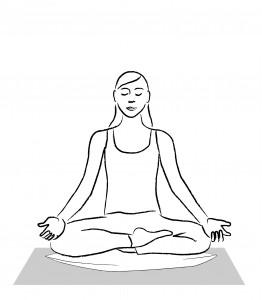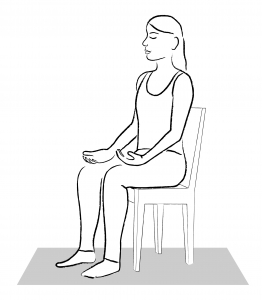Meditation practice
Meditation practice isn’t about creating a pleasant diversion for yourself. By learning to deal with challenges in meditation, you’re training your mind to deal with challenges in your everyday life. Here are strategies that address common meditation experiences. They’re excerpted from my book, Meditation Illuminated: Simple Ways to Manage Your Busy Mind.
Please note: Meditation should not be practiced while driving or while engaged in any activity that requires your attention. Find a safe environment to practice meditation, free of distractions.
The meditations and information on this website are not intended as medical advice and may not be suitable for everyone. Please check with your health care provider before implementing any changes in your lifestyle habits. Meditation should not be done while driving or while engaged in any activity that requires your attention.
Busy Mind
Although many think a busy mind is an obstacle, this is simply not so. Whether you have the same thoughts and feelings cycling through your mind, or whether you experience a steady stream of different thoughts and feelings, see if you can accept what arises. Awareness of the wanderings of the mind can actually be an effective tool to remind you to return your awareness to your focal point (for example, your breath). The quality of your awareness is more important than the quantity of whatʼs in your mind.
Sleepiness
As the body begins to relax, sleepiness can often arise. You can use the sleepiness itself as a tool to develop awareness, noticing the sleepiness, and then shifting your attention back to your focal point (for example, your breath). You can also try to meditate with your eyes slightly open with a soft gaze, since youʼre unlikely to fall asleep with open eyes. Sitting forward away from back support can also help you stay awake. Alternatively, try a walking meditation, gently placing all your attention on the soles of your feet as they connect with the ground.
Restlessness
The opposite of sleepiness, restlessness arises when you have too much energy, making it difficult to settle down. You can use the restlessness itself as a tool to develop awareness. Where do you feel it in your body? (For example, can you notice any parts of your body that feel jittery?) Can you notice the restlessness in your mind? (For example, are your thoughts jumping around so much that it seems difficult to try to settle down?) Can you untangle the sensations in your body from the stuff in your mind and recognize their distinct qualities? Try to note where you sense your restlessness, and then bring your attention back to your focal point (for example, your breath). Whenever your restlessness captures your attention, repeat the process of noting your restlessness and bringing your attention back to your focal point. Alternatively, meditations that focus on the body (for example, progressive muscle relaxation or walking meditation) offer your body something to do, giving your restlessness an outlet.

Boredom
The practice of meditation can seem tedious at times, and feelings of boredom may arise. See if you can notice boredom each time it arises, and return your attention to your focal point (for example, your breath). The boredom will likely change with continued practice. Remember, feelings are not permanent.
Physical Discomfort
Once you get settled into your meditation position, try to make as few adjustments as possible to reduce fidgeting, a form of physical restlessness and a distraction. If something is causing mild physical discomfort (for instance, an itch), try to sit with the unease for just a moment before making an adjustment; the discomfort may change or go away on its own. Sometimes imagining your breath traveling to the area of discomfort can help release it. If the discomfort continues, bring all your attention to making a gentle adjustment; for that moment, treat the adjustment itself as a focal point for your awareness.
Discomfort with Silence
If you are not used to being silent, it can be uncomfortable at first. However, people commonly find that they get used to silence and enjoy it after continued practice. Alternatively, try a sound meditation by gently resting your attention on a repetitive sound, such as chanting or the sound of ocean waves.
Not Practicing
The benefits of meditation come through regular practice. If you find you are not practicing, consider making adjustments so you are more likely to practice—for instance, scheduling shorter, manageable practice sessions or changing the time of day you meditate. Many people find that meditating immediately upon arising in the morning is a good way to fit practice into a busy schedule. Reaping the rewards of the practice may take some time, but most people find the time is well worth it.
Opportunities to Practice
The practice of meditation can seem tedious at times, and feelings of boredom may arise. See if you can notice boredom each time it arises, and return your attention to your focal point (for example, your breath). The boredom will likely change with continued practice. Remember, feelings are not permanent.

